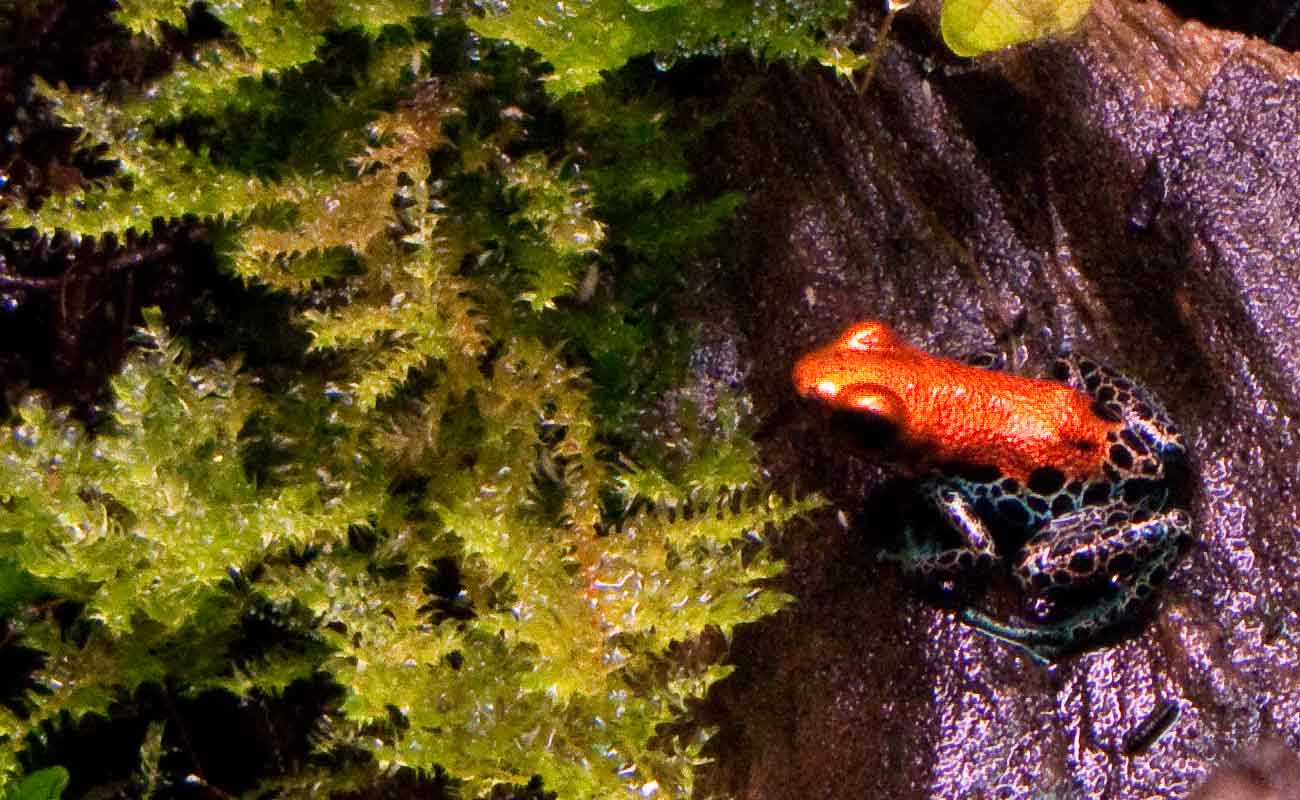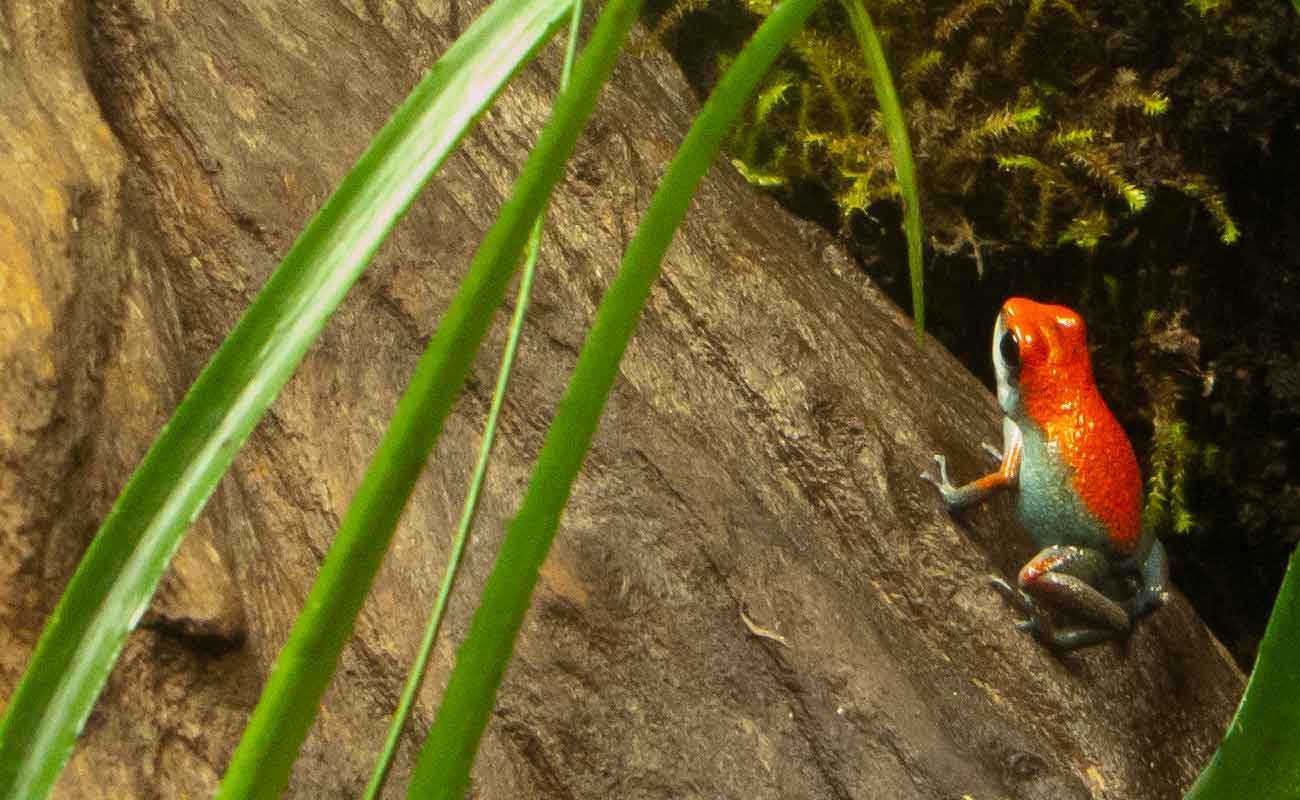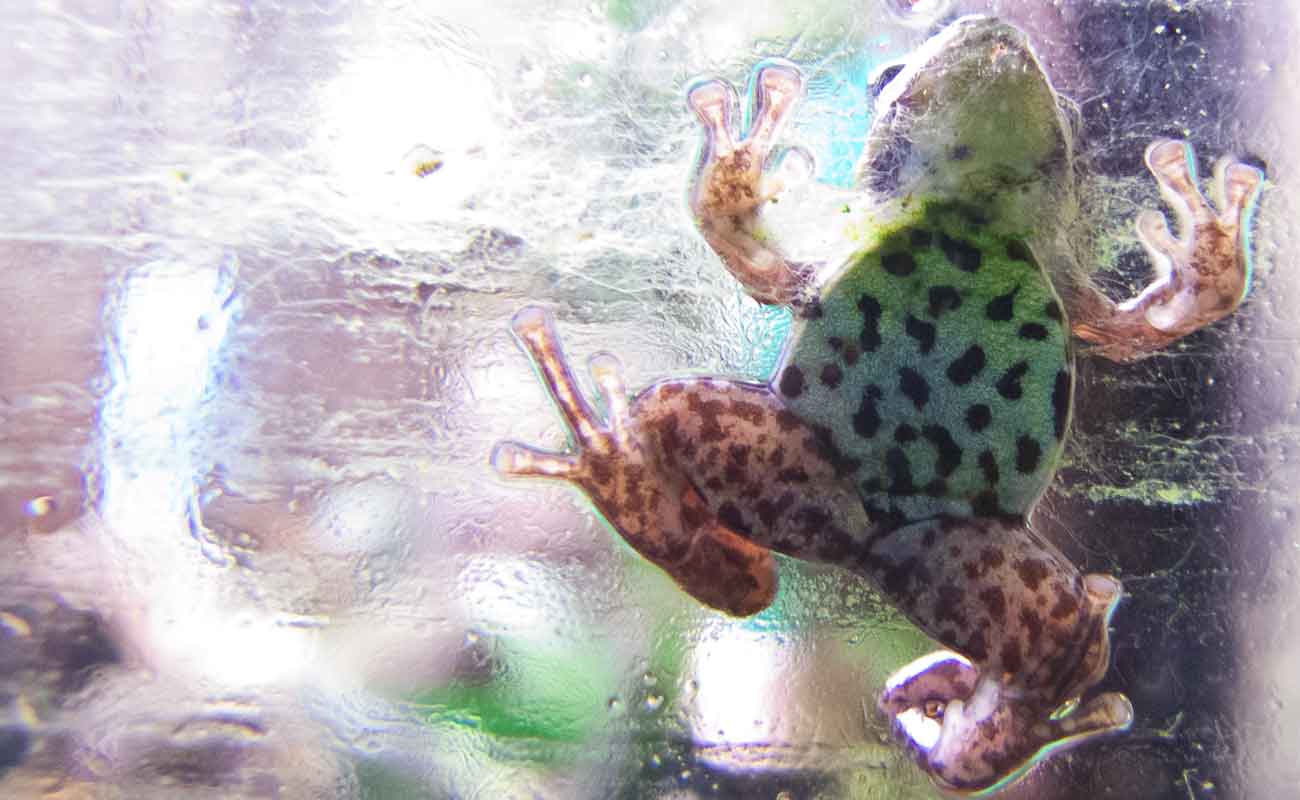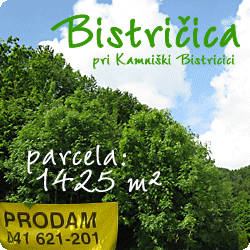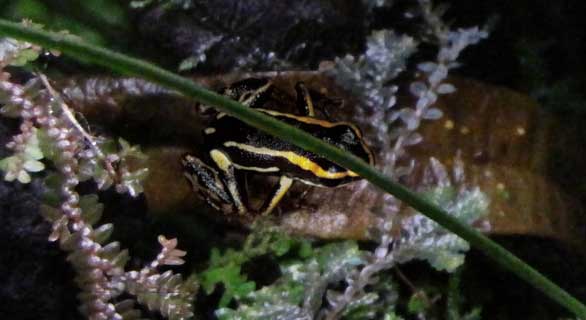
Living in the Caribbean lowlands and offshore islands of the Bocas del Toro Province in the Panamanian west, from sea level to 140 m above, the species R. claudiae, categorized as »data deficient« (DD) on the Red List, inhabits mainly leaf litter in primary forests where the temperatures vary between 24-27˚C during the day and around 20˚C at night.
The males and females are of about the same size, with males up to 13.4 and females up to 13.2 mm. Their upper sides and flanks are black, while a fine, whitish dorsolateral line, often with a golden appearance around the eye and tympanum, often extends from the tip of the snout to the sacral region. This species also has a median stripe, which is often fragmented or reduced to a dot situated anterior to the level of the cloaca. On the upper lip and on the side of the body before the insertion of the thigh, white lines can be found. The lower surfaces are mainly blackish brown, with a coarse gray marbled pattern. Their brown limbs have some whitish gray spots at the insertion points.
This frog’s clutches, comprising of three or four eggs, are deposited in the layer of leaf litter. Usually, only one or two larvae are relocated at the same time by the male to a water-filled leaf axil where they are left to complete their metamorphosis without any further aid from their parents.
Ranitomeya claudiae is also the presently smallest known poison frog and it seems to include color varieties that differ from the color pattern depicted in the original description.
Their diet consists of springtails, aphids, small and large fruit files, etc. This species is easily kept in a terrarium of the Types II or IV where the floor should always be covered in a layer of leaf litter and accommodated with some bromeliads, patches of lush vegetation and a small pool. When breeding such frogs, a steady supply with minute feeder animals is essential. Furthermore, black film containers make preferred oviposition sites.



